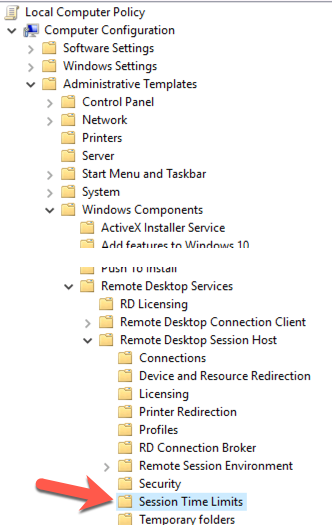Rd Windows 10
Nov 30, 2020 Duo for RD Gateway sends a user's Windows sAMAccountName to Duo's service by default. To send the userPrincipalName to Duo instead, check the Use UPN username format box. If you enable the UPN username format option, you must also change the properties of your RD Gateway application in the Duo Admin Panel to change the ' Username normalization. Remote Desktop client URI scheme Applies to: Windows 10, Windows 8.1, Windows Server 2019, Windows Server 2016, Windows Server 2012 R2 You can control a remote PC by using a Microsoft Remote Desktop client. The client can run on almost any device, including on your mobile smartphone. Operating Systems Windows 10, Windows 2003, Windows 8, Windows Vista, Windows, Windows Server 2008, Windows 7, Windows XP Additional Requirements Microsoft.NET Framework 4.5.
From CMD Just run RD /s C:pathtodelete. Hit Y to the prompt. /s ensures all the sub directories are deleted as well. Reference: Run help RD from the command line. Improve this answer. Oct 07, 2020 Setup RD Gateway Role on Windows Server 2012 R2; Install the RD Gateway Role: If your Gateway server is going to be a separate server add it to the Server Pool of your RDS Environment by going to Manage- Add Servers. In Server Manger of your RDS environment click the RD Gateway icon. Select the server from the server pool you want to install.
-->Deletes a directory.

The rd command can also run from the Windows Recovery Console, using different parameters. For more information, see Windows Recovery Environment (WinRE).
Note

This command is the same as the rmdir command.
Syntax
Parameters


| Parameter | Description |
|---|---|
[<drive>:]<path> | Specifies the location and the name of the directory that you want to delete. Path is required. If you include a backslash () at the beginning of the specified path, then the path starts at the root directory (regardless of the current directory). |
| /s | Deletes a directory tree (the specified directory and all its subdirectories, including all files). |
| /q | Specifies quiet mode. Does not prompt for confirmation when deleting a directory tree. The /q parameter works only if /s is also specified. CAUTION: When you run in quiet mode, the entire directory tree is deleted without confirmation. Make sure that important files are moved or backed up before using the /q command-line option. |
| /? | Displays help at the command prompt. |
Remarks
You can't delete a directory that contains files, including hidden or system files. If you attempt to do so, the following message appears:
The directory is not emptyUse the dir /a command to list all files (including hidden and system files). Then use the attrib command with -h to remove hidden file attributes, -s to remove system file attributes, or -h -s to remove both hidden and system file attributes. After the hidden and file attributes have been removed, you can delete the files.
You can't use the rd command to delete the current directory. If you attempt to delete the current directory, the following error message appears:
The process can't access the file because it is being used by another process.If you receive this error message, you must change to a different directory (not a subdirectory of the current directory), and then try again.
Examples
Rd Client Setup Windows 10

Rd Service Windows 10
To change to the parent directory so you can safely remove the desired directory, type:
Red Windows 10 Hp Laptop
To remove a directory named test (and all its subdirectories and files) from the current directory, type:
To run the previous example in quiet mode, type:
Additional References
